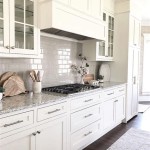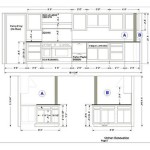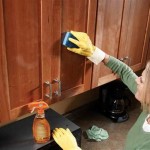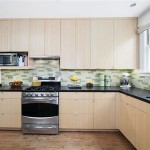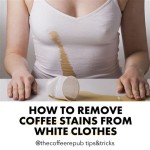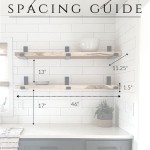How to Apply Contact Paper to Kitchen Cabinet Shelves
Contact paper, also known as shelf liner or shelf paper, provides a practical and aesthetically pleasing solution for enhancing the appearance and functionality of kitchen cabinet shelves. This versatile material can be easily applied and removed, making it a popular choice for homeowners looking to upgrade their kitchens without undertaking a major renovation. Applying contact paper to kitchen cabinet shelves involves a straightforward process that requires minimal tools and effort.
Prepare the Shelves
Before applying contact paper, ensure the shelves are clean and free of any debris or residue. Start by removing all items from the shelves and dusting them thoroughly with a damp cloth. Pay particular attention to any sticky spots or remnants of old shelf liner, as these can interfere with the adhesion of the new contact paper. If necessary, use a gentle cleaning solution to remove stubborn stains or grease. Allow the shelves to dry completely before proceeding to the next step.
Measure and Cut the Contact Paper
Once the shelves are clean and dry, measure the length and width of each shelf to determine the required size of the contact paper. It is advisable to measure each shelf individually, as imperfections in the cabinetry can affect the precise dimensions. Add approximately one inch to each measurement to allow for overlap and a clean finish. Use a ruler and a sharp utility knife to cut the contact paper into the desired size, ensuring clean and precise edges.
Apply the Contact Paper
With the contact paper cut to size, apply it to the shelves starting from one edge. Peel back a few inches of the backing paper, leaving the sticky side exposed. Align the edge of the contact paper with the corresponding edge of the shelf and press firmly to ensure proper adhesion. Continue peeling back the backing paper gradually and smooth out any air bubbles or wrinkles using a squeegee or a clean cloth. Work your way across the entire surface of the shelf, ensuring that the contact paper is tightly adhered to the surface without any gaps or creases.
When applying contact paper to curved or irregular-shaped shelves, it is best to start from the center and work your way outwards. This technique allows for a more controlled application and minimizes the risk of air bubbles or wrinkles, which can be more challenging to smooth out along curved surfaces. Pay close attention to the corners and edges of the shelves, ensuring that the contact paper is properly adhered in these areas. Once the application is complete, trim any excess contact paper using a utility knife, creating a clean and professional look.
Maintain the Contact Paper
Contact paper is relatively low-maintenance, but it is essential to follow a few basic cleaning guidelines to preserve its appearance and extend its lifespan. Avoid using abrasive cleaners or scouring pads, as these can scratch or damage the surface. Instead, opt for a mild soap and water solution to clean spills or stains. If the contact paper becomes dirty or discolored, you can replace it with a fresh sheet.
Considerations for Choosing Contact Paper
When choosing contact paper, consider the following factors:
Color and Pattern
Contact paper is available in a wide range of colors and patterns, allowing you to personalize your kitchen cabinets and create a cohesive aesthetic. Choose colors and designs that complement your kitchen decor and create a desired look. Consider the overall style of the kitchen, such as modern, rustic, or traditional, and select contact paper that aligns with the chosen theme.
Durability
Contact paper is available in different levels of durability and resistance to wear and tear. Determine the level of durability needed for your kitchen shelves based on their usage frequency and the type of items stored on them. For example, shelves used for heavy objects or storing food items may require more durable contact paper than those used for light items or decorative purposes.
Ease of Application and Removal
Contact paper should be chosen with ease of application and removal in mind. Look for contact paper that is designed for easy repositioning and removal, allowing for adjustments during installation and convenient replacement when necessary. Read product descriptions and reviews to ensure that the chosen contact paper meets these criteria.

Kitchen Cabinet Contact Paper Update Kelly Leigh Creates

Simple Diy Drawer And Shelf Liners

Contact Paper Ideas For Kitchen Cabinets Décoration Maison Idées Pour La Interieur

Kitchen Remodel Project Diy Cabinet Update With Wrapping Paper Tatertots And Jello

Simple Diy Drawer And Shelf Liners

Simple Diy Drawer And Shelf Liners

Colorful Diy Kitchen Cabinet Liner In My Own Style

Adding Pretty Contact Paper To Cabinet Shelves Love It Remodel Kitchen Organization

Contact Paper 13 Unexpected Ways To Use It At Home Bob Vila

11 Ways To Use Contact Paper Decorate Your Home Kitchen Decor Inspiration Diy Espresso Cabinets
Related Posts

